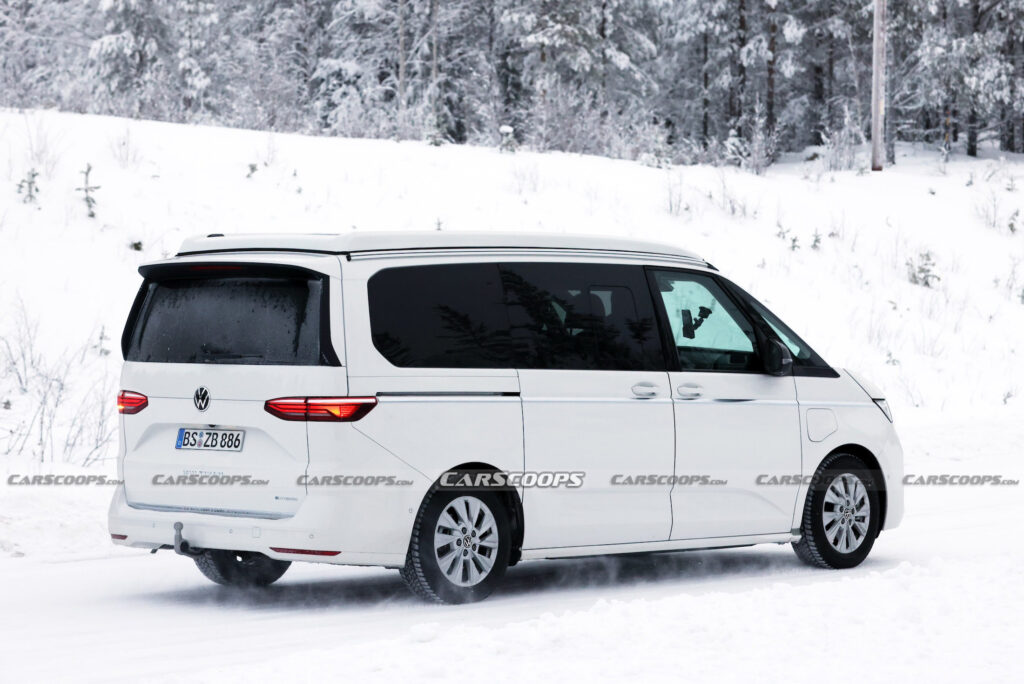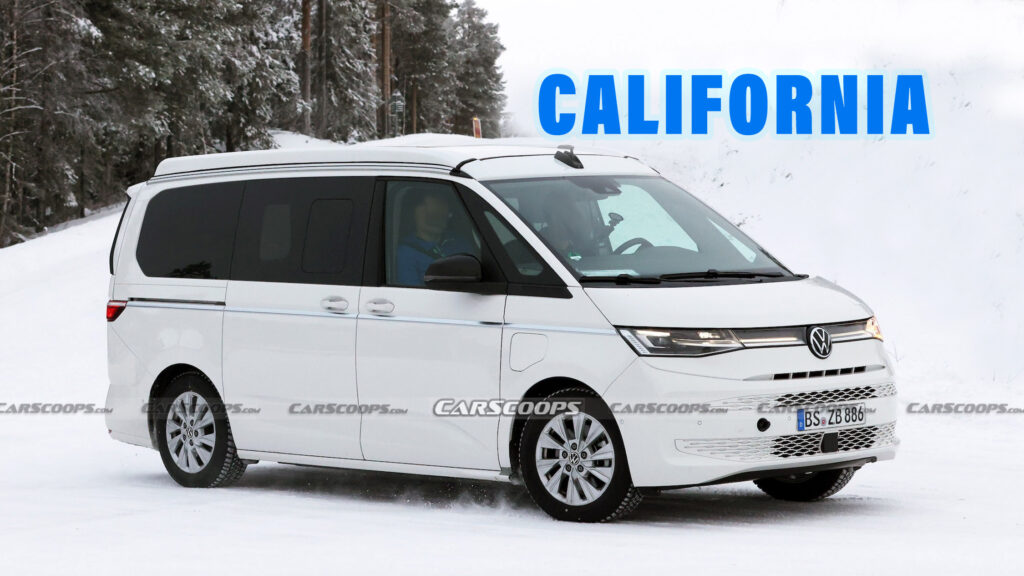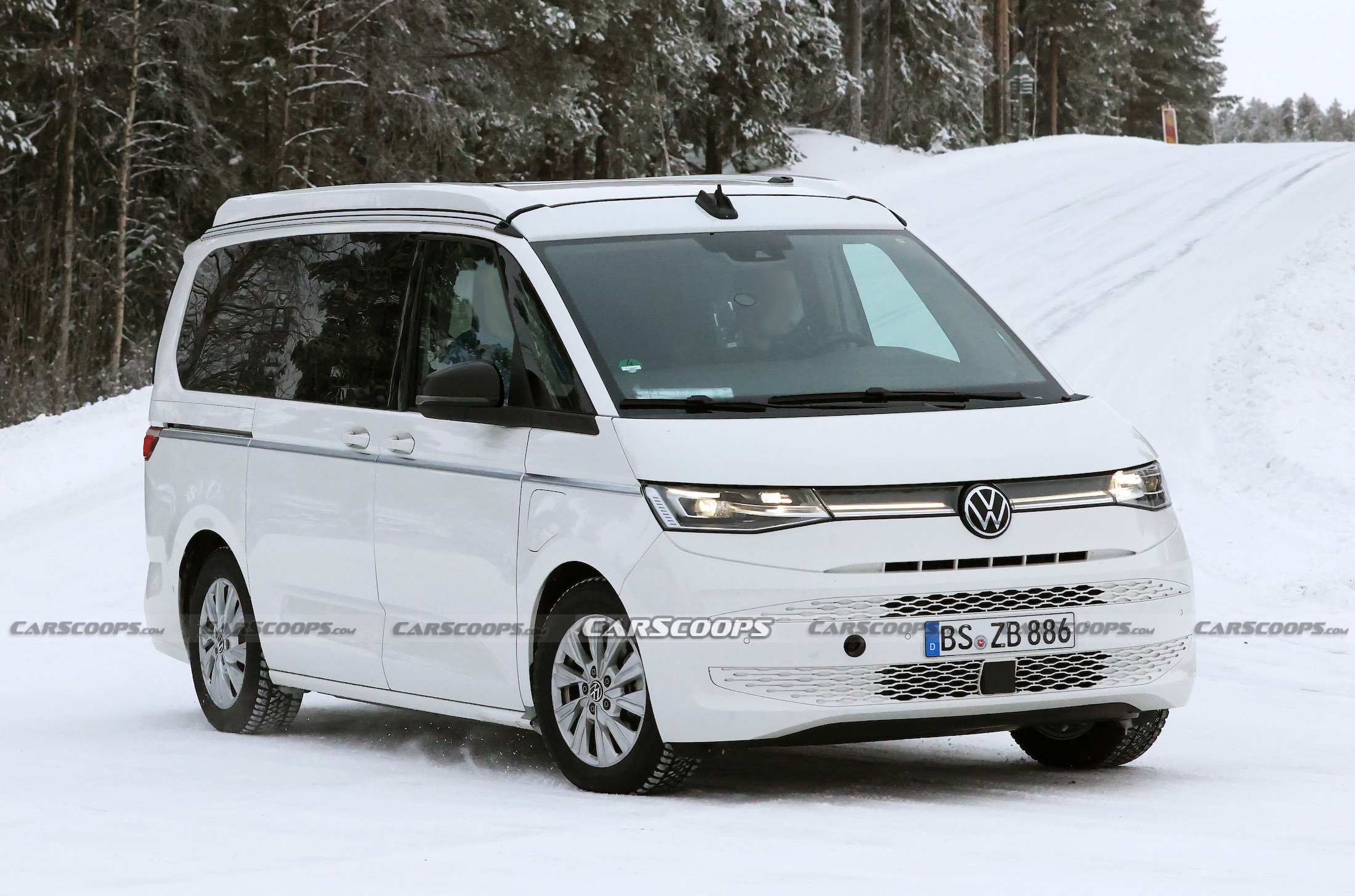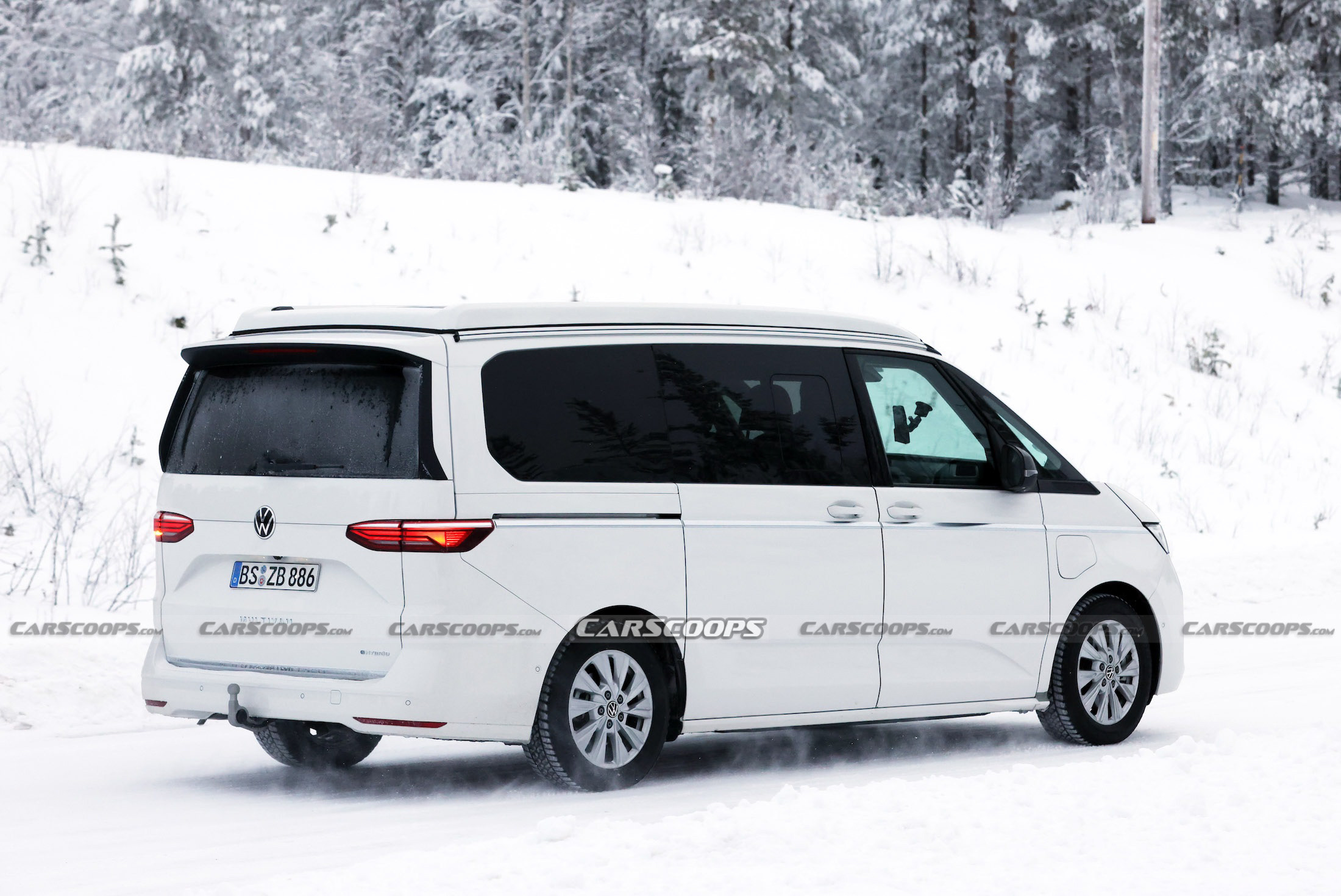That last time we spied VW’s next-generation prototype California camper van it was hammering around the Nurburgring, and we only hope that the test team remembered to properly secure all of those pots and pans before they set off. This time the RV version of VW’s T7 Multivan is playing in the snow at a more gentle pace, testing out the effects of freezing temperatures on the plug-in hybrid powertrain.
The California has never been available with PHEV power before, but back in August VW effectively confirmed that one was coming when it revealed the plug-in California Concept, whose front-fender charging flap is replicated on the white prototype seen in these latest spy photos. The drivetrain could be the same setup already available in the regular T7 Multivan eHybrid, which consists of a 1.4-liter petrol engine and a single electric motor developing a combined 215 hp (160 kW/218 PS).
But hopefully, VW will phase in the group’s newer 1.5-liter hybrid engines that are now fitted to the new Passat and Tiguan. Those cars offer 201 hp (150 kW / 204 PS) and front-wheel drive, or 268 hp (200 kW / 272 PS) and all-wheel drive. They also benefit from a bigger battery, which could be very useful because the current Multivan’s relatively small 13 kWh battery provides an official range of 31 miles.
Related: VW Unveils New PHEV California Concept With More Batteries And Doors Than Ever

That’s not great by modern PHEV standards and the California wouldn’t even get close with all of the extra weight of the camper package, which includes a pop-up roof, kitchen, and – if the concept is a good indicator – fold-out canopies fitted to both sides. The reason for the second canopy is that the new California has sliding doors on both sides for the first time.
Traditionally that wasn’t possible because the kitchen was fixed to the left side of the van, but the concept featured a redesigned kitchen that offered a gap passengers could squeeze through. It also means owners can access the kitchen to cook from inside and outside of the California, and that buyers in right-hand drive markets don’t have to exit into traffic from the back seats when they park at the side of a road.
One of the big advantages of the PHEV drivetrain is that it should give owners a bigger reserve of onboard power to help them camp for longer in remote areas. But since not everyone wants PHEV power, and adding that hardware will only make an already expensive van even pricier, traditional petrol and diesel versions are also sure to be offered. The current T6.1 California starts at £61,442 ($77,800) and prices will inevitably rise when the new van makes its official debut next spring.



















